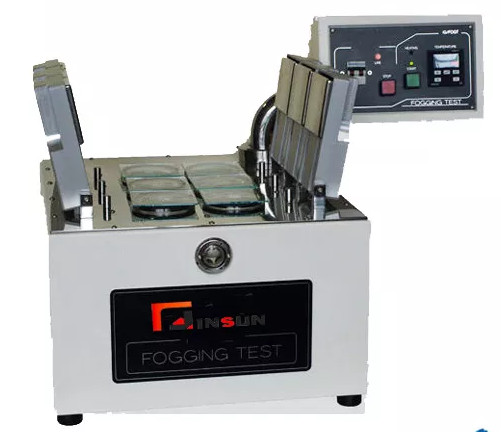- Qinsun Instruments Co., Ltd.
- Tell:+86-21-6780 0179
- Phone:+86-17740808215
- Address:No. 2578 Minhang District Gu Dai Road, Shanghai
- Contact:Mr. Li
- QQ:846490659
What equipment is needed for the automotive interior fogging test?

The automotive interior fogging test is a test method to evaluate the anti-fog performance of automotive interior materials.
What are the potential health and safety concerns associated with fogging in automotive interiors?
There may be some potential health and safety issues when fogging the interior of a car. Here are some possible issues:
1. Respiratory tract irritation: Chemicals in aerosols may irritate the respiratory tract, causing symptoms such as coughing, throat discomfort, or wheezing.
2. Toxic substances: Some aerosols may contain toxic substances, such as volatile organic compounds (VOCs) or other chemicals. Long-term exposure to these substances may cause negative health effects.
3. Allergic reaction: Some people may be allergic to the ingredients in the aerosol, causing skin itching, redness, difficulty breathing, or other allergic symptoms.
4. Fire risk: Chemicals in aerosols may be flammable and may increase the risk of fire if used or stored under inappropriate conditions.
To ensure safety, it is recommended to take the following measures when fogging:
- Use aerosols that comply with relevant standards and regulations, and ensure that their ingredients are safe and reliable.
- When fogging, make sure the room is well ventilated to reduce the accumulation of harmful substances.
- Use personal protective equipment such as gloves and masks to reduce the risk of exposure to aerosols.
- Follow the instructions for use and safe operating guidelines to ensure proper use of nebulizer equipment.
- Regularly check the quality of equipment and aerosols to ensure their safety and effectiveness.
Please note that specific health and safety issues may vary depending on the aerosol used and operating conditions. It is recommended to consult professionals or relevant agencies for more detailed and accurate information before using mist treatment.
What equipment is needed for the automotive interior fogging test?
Conducting automotive interior fogging testing typically requires the following equipment:

1. Environmental test chamber with temperature and humidity control function: The fogging test requires the control of specific temperature and humidity conditions. Environmental test chambers can provide stable environmental conditions, making the testing process repeatable and controllable.
2. Heating device: The heating device is used to increase the temperature of the surface of the test sample to simulate the high temperature environment inside the car in real scenarios.
3. Humidifier: The humidifier is used to increase the relative humidity in the environmental test chamber to simulate humid environmental conditions.
4. Visual evaluation system: This is usually a device that can clearly observe and record the changes in the test sample during the fogging process. For example, a high-resolution camera, microscope or similar device.
5. Data recording and analysis equipment: During the test, data such as fogging time and fogging degree need to be recorded and analyzed. Test data may be recorded and processed using a computer, data acquisition system, or other similar device.
In addition to the above equipment, other auxiliary equipment and materials also need to be considered, such as: test samples, thermohygrometers, humidity generators, etc. At the same time, the accuracy and repeatability of the test equipment should be ensured to obtain reliable test results.
It should be noted that the specific test methods and equipment selection may vary depending on different standards, regulations and experimental purposes. It is recommended to refer to relevant standards and specifications before conducting automotive interior fogging tests to ensure that equipment that meets the requirements is selected and used.





